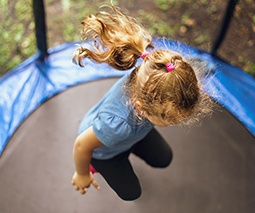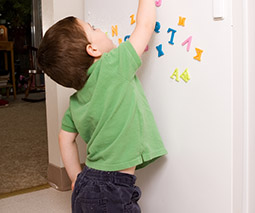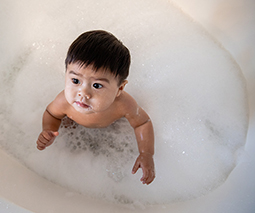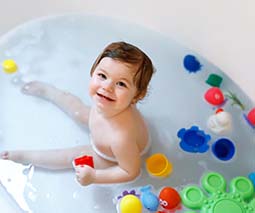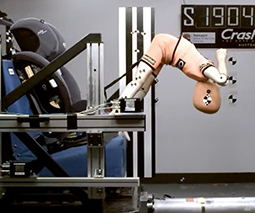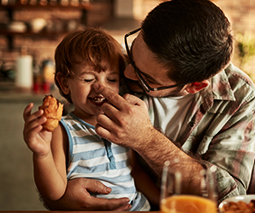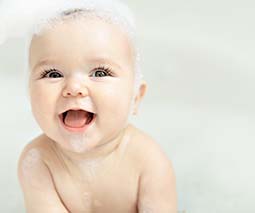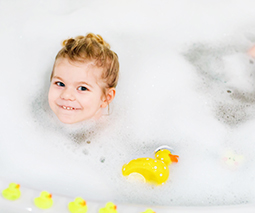These are the most common causes of burn injuries in children during winter
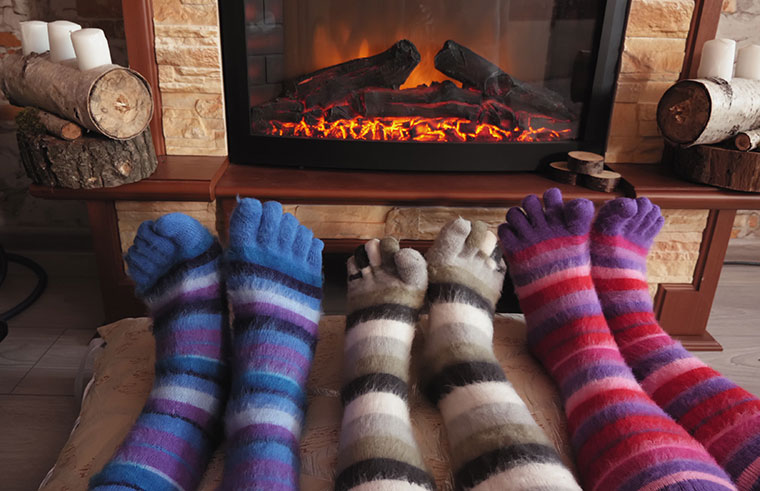
Winter is here, that time of year when all we want to do is curl up by the fireside or heater and drink bowls of delicious warming soup. However, as a result, it’s often a time when children suffer more burns.
July is National Burns Awareness Month and Sarah Hunstead, a paediatric nurse and founder of CPR Kids, wants all parents to know about burns – how to prevent them and what to do if they occur.
Listen to Sarah Hunstead on Feed Play Love:
Beware the campfires and fire pits
According to Sarah, the issue with camp fires and fire pits is not just about children falling into them, but also what happens when you put the fire out. “If you were just putting the flames out with sand, eight hours later that’s still going to be hundreds of degrees, and if you’re a three or four or five-year-old child, you don’t know that that’s hot,” says Sarah. “I’ve seen kids with injuries where there’s been that fire on the beach, it’s been doused with sand, they can’t tell that there’s been a fire there, they’ve run straight across and ended up with terrible burns on their feet, so the moral to that story is sand and dirt don’t cut it – douse your campfire with copious amounts of water.”
Keep the home fire burning – and covered
Fires in the home can also prove dangerous, simply because the metal or coverings around them become too hot to touch. For Sarah, this is about teaching your kids what should be avoided at all costs and also investing in fireguards.
“We’ve got a glass-fronted fireplace at home and when we moved in there, I remember thinking that we were going to have to do something about it because it’s really dangerous,” says Sarah.
“So, we let the heater heat up, let the glass heat up a bit and we got our kids to touch it, not so much it was going to take the skin off their fingers or do them an injury, but hot enough for them to go, ‘Oh, that actually would hurt,’ and so they learnt pretty quickly, and even still now ten years later, it’s ingrained in them that they just walk around and not play next to it.”
Where is the heater?
When we buy a new heater, Sarah suggests always reading the instruction manual. “A lot of heaters actually have built-in safety instructions, and they have built-in safety features, such as if a child was to knock a heater over it will turn itself off,” she says.
Sarah also suggests taking care of where you place a heater in your home, asking questions such as, is it next to the curtains? Is your child going to put their toys on top of it? Are your children aware of the fact that they can’t touch it? Or consider if you really need a heater in the kids’ bedrooms at all.
“So, thinking about location, where is it, the safety features and educating your kids,” says Sarah.
Taking preventative action
While heaters and home fires are certainly dangerous, the number one cause of burns – all year round – is scalds, and Sarah urges parents to take preventative measures. “I really want you to think about where you’re putting that coffee, can those little fingers reach it? Are you drinking that coffee while they’re in the pouch in the front of you or over the top of the pram?” says Sarah.
“Have a think about these things because kids will burn in much shorter amounts of time, at lower temperatures than grown-ups do. Think about those hot liquids, the coffee, tea, soups, bowls of noodles, that kind of stuff. Also another big one that’s all year round – hair straighteners – keep them out of range.”
What do I do?
According to Sarah, there are very clear and simple steps to take if your child suffers a burn.
Firstly you need to remove the heat source. “So, if they’ve pulled that hot cup of tea on themselves, we’re going to remove the clothing where they’ve been burned and nappy too because if that hot liquid has gone down inside their nappy, we’ve got to get that off,” says Sarah. “Unless the clothing is stuck to the skin and then we need to leave it there.”
The next step is to cool the burn with cold water. “Cold running tap water preferably for 20 minutes minimum,” says Sarah. “And the full 20 minutes, not five, not ten, but 20 minutes.”
Then it’s time to seek medical advice. “If the skin is disrupted, if the skin is blistered or it’s come away, we need medical help,” says Sarah. “And of course, if it’s an extensive burn, if it has involved flames and you’re worried about smoke inhalation, if it’s around their neck, their chest or if your gut says something is really wrong here, then call triple zero and get an ambulance.”
Sarah also says to absolutely avoid putting any creams, lotions, ice or butter on top of the burn. “We’d preferably want just cool running tap water.”
